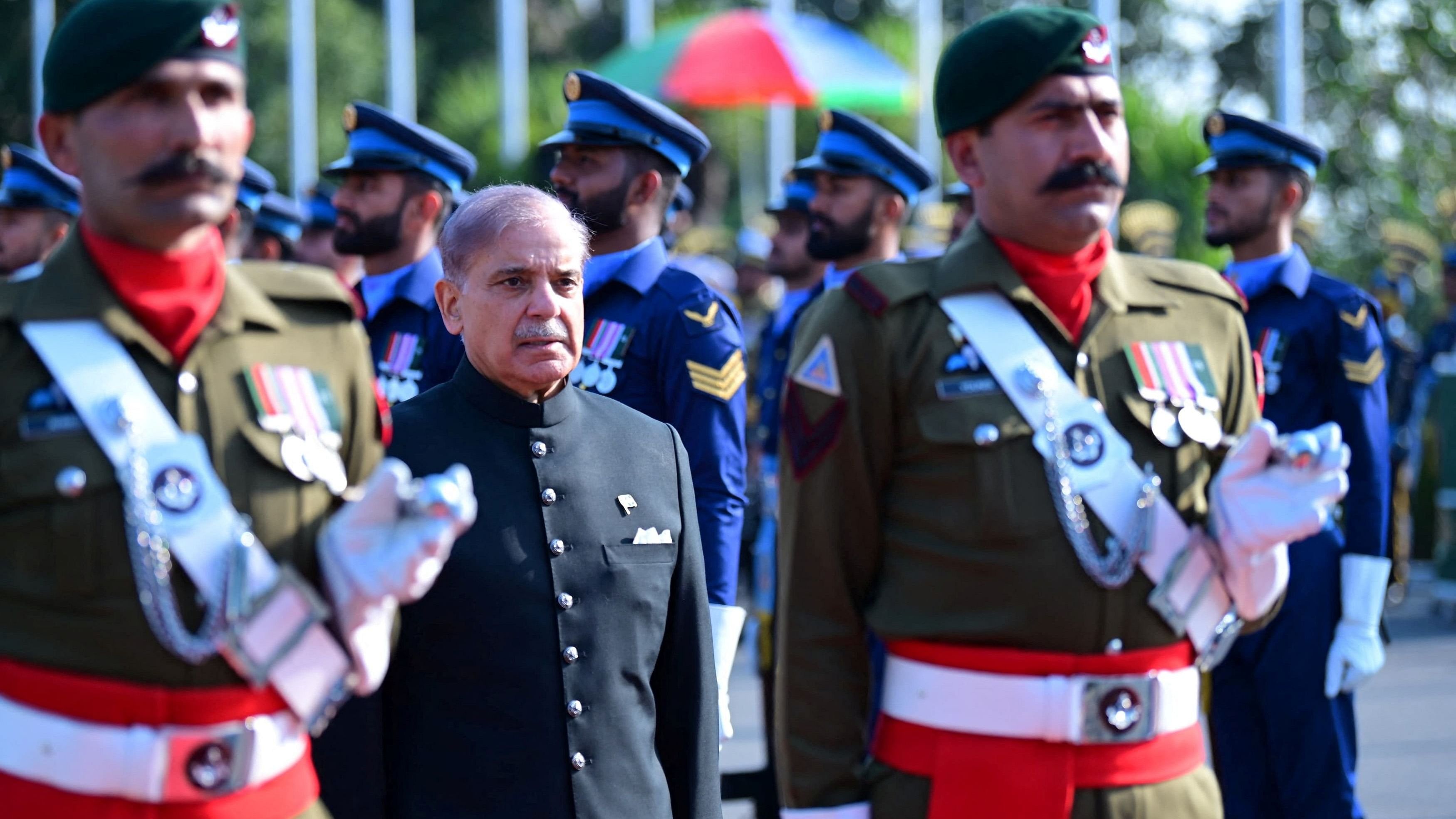
Pakistan's newly elected Prime Minister Shehbaz Sharif, inspects the honor guard at the Prime Minister's House in Islamabad, Pakistan March 4, 2024
Credit: Reuters Photo
Islamabad: Cash-strapped Pakistan’s external public debt sharply rose by USD 1.2 billion in six months to USD 86.358 billion as of September 30, 2023, with the World Bank and China emerging as the largest multilateral and bilateral contributors to total disbursement, a government report has said.
Pakistan received total foreign inflows of USD 3.5 billion in July-September 2023 against loan repayments of USD 1.5 billion, resulting in a net inflow of USD 1.97 billion.
As of September 30, 2023, the total external public debt of the government was USD 86.358 billion,” the first quarterly report on Foreign Economic Assistance (FEA) of the current fiscal year released on Wednesday by the Ministry of Economic Affairs (MEA) said.
Around 64 per cent of the total external public debt was obtained from multilateral and bilateral sources having concessional terms and longer maturity, according to a report in newspaper The Dawn that quoted the MEA.
The external public debt as of March 31, 2023, amounted to USD 85.18 billion. In comparison, the country had received USD 2.2 billion in loans and repaid USD 2.06 billion during the same period last fiscal year (July-September 2022), leading to a net addition of USD 142 million.
The report also said Pakistan had signed new agreements worth USD 642 million in fresh commitments during the first quarter of the year and all new commitments had been funded by multilateral development partners.
International bonds and commercial loans could not be secured because of adverse market conditions following poor credit rating and resultantly unaffordable interest rates, it said.
This USD 3.538 billion FEA is in addition to USD 1.2 billion released by the International Monetary Fund (IMF) on July 13 as the first tranche of the USD 3 billion Stand-By Arrangement (SBA) and USD 1 billion by the United Arab Emirates that are separately accounted for by the State Bank of Pakistan.
The World Bank (USD 306 million) and Islamic Development Bank (USD 100 million) were amongst the largest contributors among multilateral development partners while on the bilateral side, China emerged as the primary contributor to the total disbursements during the period disbursing USD 509m, followed by USD 300m from Saudi Arabia for import of oil and petroleum products.
During the first quarter (July-Sept 2023-24), the disbursed amount is in the shape of programme financing, project financing, commodity financing, and budgetary support helped the government support economic reforms, execute development activities and provide support to its balance of payments position, the report said, adding that a significant share, i.e. 64 per cent of the total external public debt, was secured on concessional terms with extended maturities.
Giving a sectoral breakdown, the MEA said the share of disbursements under floods stood at USD 101 million, followed by USD 64 million for energy and power, USD 52 million for the water sector, USD 34 million for transport and communication, USD 29 million for health and nutrition, USD 25 million for agriculture and USD 22 million for physical planning and housing in the total project assistance, reported the Dawn newspaper.